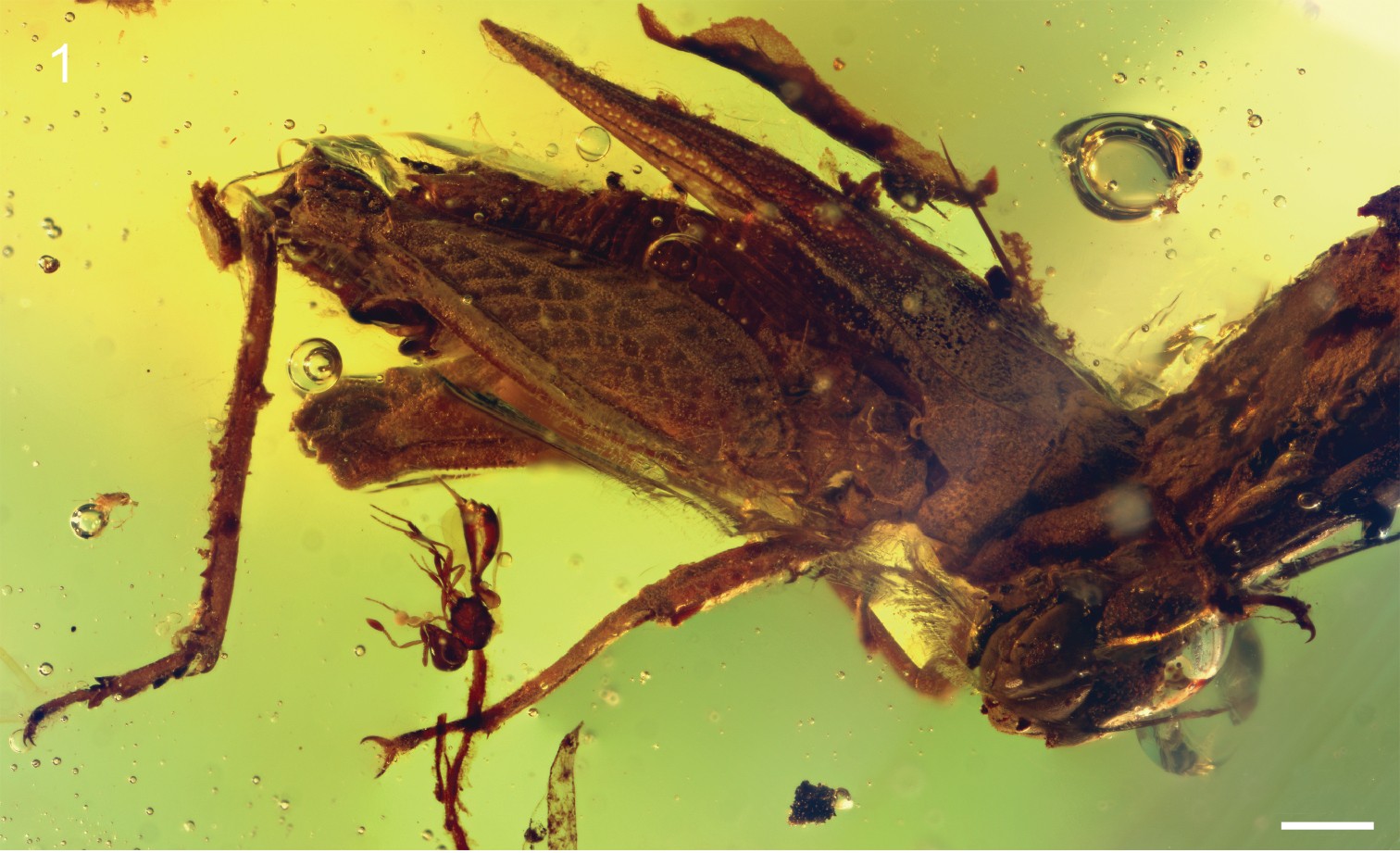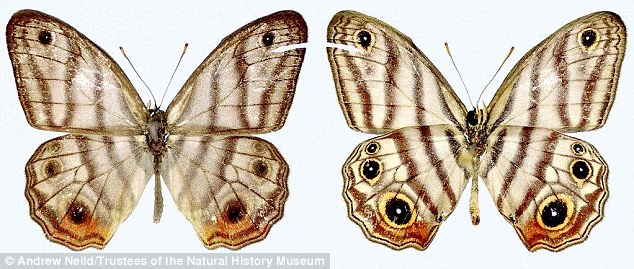A 430-million-year-old fossil discovered "frozen in time" in ancient volcanic rock has been named after Sir David Attenborough.
The tiny crustacean, measuring less than 1cm long, was found by researchers in Herefordshire.
It has been named Cascolus Ravitis, the first word a Latin rendering of the Old English equivalent to Attenborough.
Ravitis is a reference to the Roman name for Leicester, where Sir David lived on the city's university campus.
Fossil named after Sir David Attenborough
22 March 2017
BBC News

Cascolus ravitis has been reconstructed as a virtual fossil, revealing every detail of the animal
A 430-million-year-old fossil discovered "frozen in time" in ancient volcanic rock has been named after Sir David Attenborough.
The tiny crustacean, measuring less than 1cm long, was found by researchers in Herefordshire.
It has been named Cascolus Ravitis, the first word a Latin rendering of the Old English equivalent to Attenborough.
Ravitis is a reference to the Roman name for Leicester, where Sir David lived on the city's university campus.
The fossil was given its name by researchers from the universities of Oxford, Leicester, Yale and Imperial College London.
Sir David said: “The biggest compliment that a biologist or palaeontologist can pay to another one is to name a fossil in his honour and I take this as a very great compliment.”
The fossil is the latest in a long list of species and objects to be named after the famous naturalist and broadcaster.
Others include:

A 20 million year old pygmy grasshopper species named Electrotettix attenboroughi found in 2014 preserved in amber in the Dominican Republic

A long-beaked echidna given the name Zaglossus attenboroughi which lives in the forested areas of New Guinea

A rare butterfly named Euptychia attenboroughi, in honour of his love for butterflies, which lives in tropical forests in places like Colombia and Brazil

A flightless weevil from Indonesia was given the name Trigonopterus attenboroughi

A species of wildflower named the Attenborough Hawkweed discovered in the Brecon Beacons

Dinosaur Attenborosaurus conybeare - a type of plesiosaur from the Early Jurassic of Dorset

A polar research ship called the RRS Sir David Attenborough - which was given his name despite the title "Boaty McBoatface" topping a public vote.
Sir David, who turned 90 in May last year, grew up on the campus of the former University College Leicester where his father Frederick was the principal.
Lead researcher Prof David Siviter, from the University of Leicester, said Sir David had inspired his interest in natural history.
He said one of the reasons Sir David became a great naturalist was by collecting Jurassic rock fossils in the Leicester countryside.
The newly discovered creature is a tiny arthropod - a group of animals that includes modern insects, spiders, shrimp and crayfish.
Prof Siviter said the fossil found in the Herefordshire rocks had been "frozen in time" by volcanic ash.
“It’s like an undersea Pompeii,” he told BBC News.
It was so well preserved, the research team were able to use 3D computer modelling to show its features - including minuscule eyes, delicate antennae, multiple jointed limbs and a tough exoskeleton.

The researchers presented Sir David Attenborough with a high resolution image of the fossil they named in his honour
fossil named after Sir David Attenborough - BBC News
The tiny crustacean, measuring less than 1cm long, was found by researchers in Herefordshire.
It has been named Cascolus Ravitis, the first word a Latin rendering of the Old English equivalent to Attenborough.
Ravitis is a reference to the Roman name for Leicester, where Sir David lived on the city's university campus.
Fossil named after Sir David Attenborough
22 March 2017
BBC News

Cascolus ravitis has been reconstructed as a virtual fossil, revealing every detail of the animal
A 430-million-year-old fossil discovered "frozen in time" in ancient volcanic rock has been named after Sir David Attenborough.
The tiny crustacean, measuring less than 1cm long, was found by researchers in Herefordshire.
It has been named Cascolus Ravitis, the first word a Latin rendering of the Old English equivalent to Attenborough.
Ravitis is a reference to the Roman name for Leicester, where Sir David lived on the city's university campus.
The fossil was given its name by researchers from the universities of Oxford, Leicester, Yale and Imperial College London.
Sir David said: “The biggest compliment that a biologist or palaeontologist can pay to another one is to name a fossil in his honour and I take this as a very great compliment.”
The fossil is the latest in a long list of species and objects to be named after the famous naturalist and broadcaster.
Others include:

A 20 million year old pygmy grasshopper species named Electrotettix attenboroughi found in 2014 preserved in amber in the Dominican Republic

A long-beaked echidna given the name Zaglossus attenboroughi which lives in the forested areas of New Guinea

A rare butterfly named Euptychia attenboroughi, in honour of his love for butterflies, which lives in tropical forests in places like Colombia and Brazil

A flightless weevil from Indonesia was given the name Trigonopterus attenboroughi

A species of wildflower named the Attenborough Hawkweed discovered in the Brecon Beacons
Dinosaur Attenborosaurus conybeare - a type of plesiosaur from the Early Jurassic of Dorset

A polar research ship called the RRS Sir David Attenborough - which was given his name despite the title "Boaty McBoatface" topping a public vote.
Sir David, who turned 90 in May last year, grew up on the campus of the former University College Leicester where his father Frederick was the principal.
Lead researcher Prof David Siviter, from the University of Leicester, said Sir David had inspired his interest in natural history.
He said one of the reasons Sir David became a great naturalist was by collecting Jurassic rock fossils in the Leicester countryside.
The newly discovered creature is a tiny arthropod - a group of animals that includes modern insects, spiders, shrimp and crayfish.
Prof Siviter said the fossil found in the Herefordshire rocks had been "frozen in time" by volcanic ash.
“It’s like an undersea Pompeii,” he told BBC News.
It was so well preserved, the research team were able to use 3D computer modelling to show its features - including minuscule eyes, delicate antennae, multiple jointed limbs and a tough exoskeleton.

The researchers presented Sir David Attenborough with a high resolution image of the fossil they named in his honour
fossil named after Sir David Attenborough - BBC News